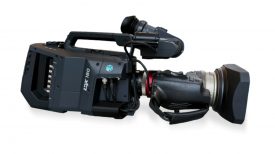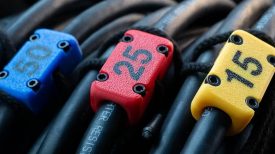Guest post by VICE shooter Spencer Chumbley:
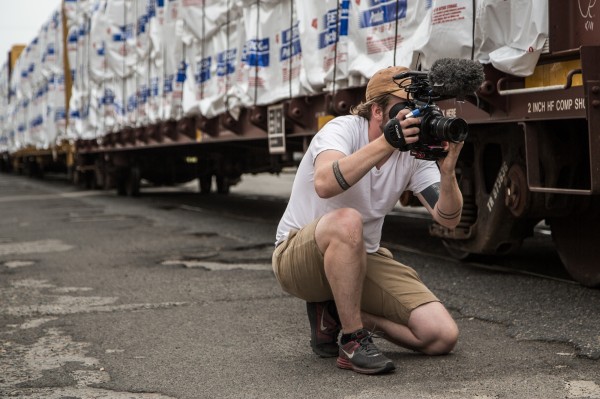
Last year, I wrote about the launch of VICE News and what it meant for “Generation 5D.” After a year of shooting for VICE News as a staff producer/shooter and now working freelance for several VICE channels, I thought it was time to recap my experience with a camera that has become a workhorse for the the web-native VICE News: the Canon C100.
The release of the C300 caused many news and documentary shooters to move past the ‘DSLR revolution’ into a new order. It met their aesthetic needs, had better ergonomics that DSLRs and also passed broadcast standards – 4:2:2 color and a bit rate of 50 mbps saw to that. But what about those professionals whose work lives on the web, such as VICE News? people who didn’t need the high spec but wanted the look, the controls and the handling? The answer turned out to be the cheaper Canon C100, but like any camera it isn’t without problems.
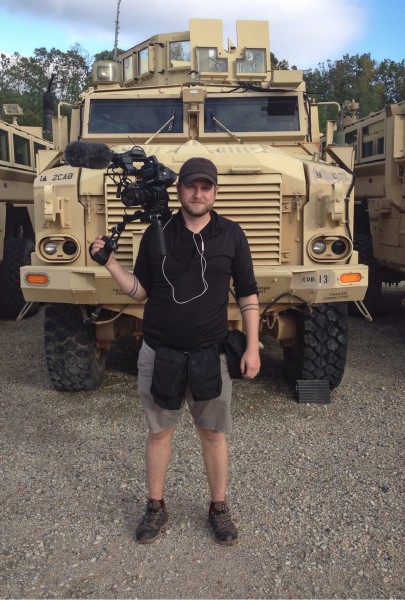
I‘ve spent much of the last year figuring out what works best for the shooting news and documentary for the web on the C100. Here’s what I’ve learned from working in the field with the camera and building my kit as freelancer on a budget:
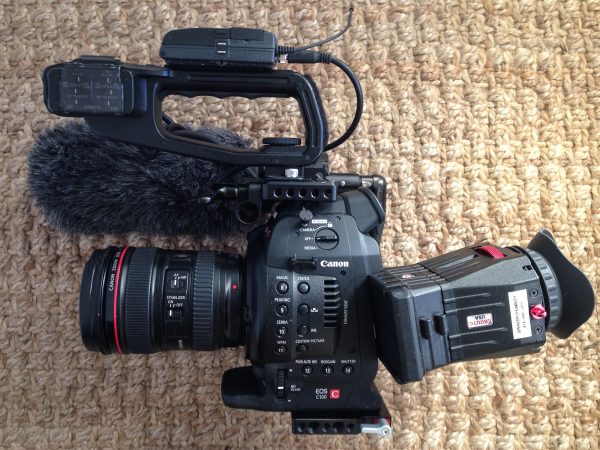
Must-Have:
The number one accessory for the Canon C100 is the Zacuto Z-finder ($345). The built-in EVF is useless and even the clever C-Cup doesn’t make things much better. The Z-finder allows for shooting in broad daylight and gives an additional point of stabilization when shooting handheld.
Strip it down:
The Canon C100 is tiny and manoeuvrable when stripped down. Lose the top handle, replace it with a Rode VideoMic Pro or a comparable mic in the cold shoe, and you’ve got a very, very tiny camera – good for discreet b-roll filming or when you just need to have a smaller footprint.
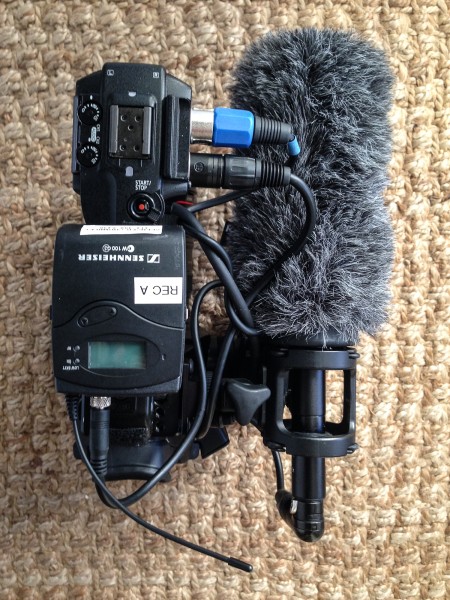
Lensing on a Budget?
Buy the camera in a bundle with 24-105 f4L IS. Then pick up the Canon 17-55 f2.8 IS ($879.00) for a image stabilized wide angle that is fast and much cheaper than either of the Canon 16-35 f2.8 L / 16-35 f4 L ($1200 / $1700) options. Can’t spring for the Canon 70-200 f2.8L IS ($1450)? Pick up the Canon 70-200 f4L IS ($709) which is about half the price and half the weight and rely upon the low light ability of the camera. Need a true super wide for the Super 35 sensor? Take a look at Tokina’s EF mount 12-28 F4 or Tokina 11-16mm f2.8 (at around $500)
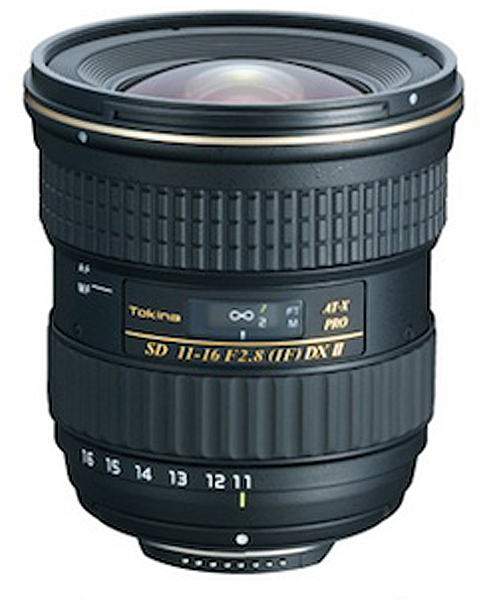
Shoot light:
Lose any baseplates or rods and shoot handheld with three points of contact: 1, via the Zacuto Z-Finder; 2, hand strapped on the grip; and 3, hand cradling on the bottom of the camera with your index or middle finger racking focus straight on the focus ring, with no follow focus needed. Remember the days of shooting only with a loupe on your DSLR? This is a similar experience but with focus peaking, zebras, and on board audio control.
Simplify your wireless mic packs:
Remove the the cold shoe mounts from your lavalier mics and outfit your top handle and the transmitter packs with heavy duty velcro. This cuts down on rig assembly/breakdown time and frees up the cold shoe for on camera LED lights when needed. Want more security? Grab some bongo ties and stack the packs on one another.
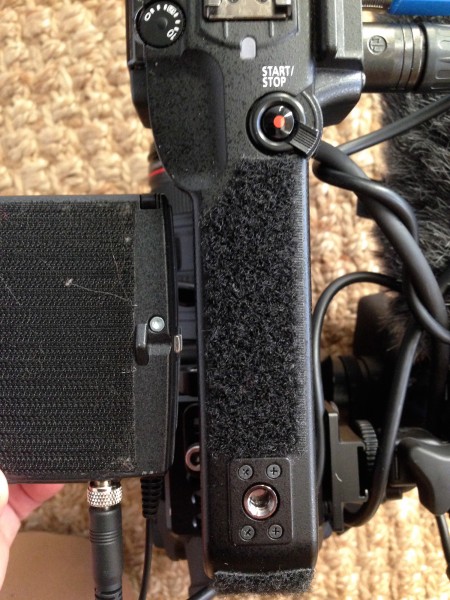
Secure the Handle:
The handle to body connection via cold shoe on the C100 is very weak. I’ve seen a few broken ones come through VICE’s equipment room. Grab a Wooden Camera ($205) or Small Rig / Cool LCD top plate/cold shoe ($67) to strengthen the connection and add additional mount points.
Relocate the Shotgun Mount:
The position of the shotgun mount on the top handle of the camera makes it almost impossible to shoot in cars or in tight locations. Grab a Auray universal shock mount ($50) and a cold shoe and move the mount back to your top plate. You can remove the existing shotgun mount easily with a screw driver. The camera will be much more compact.
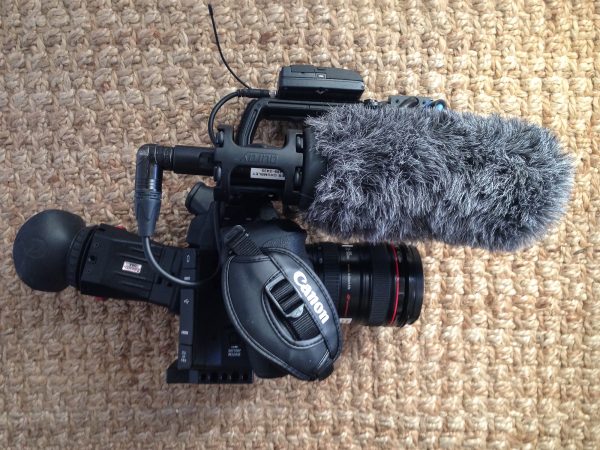
Shoulder rig?:
If your shooting style requires it build out a shoulder rig that supports your shooting style. The inspiration for mine came from what I had seen used by VICE Director of Photography Jake Burghart on his C300. It gets my camera up on my shoulder in the same style as his, but using an EVF instead of the built in monitor of the C300. I used the following parts, many of which are also compatible for use on the C300:
Wooden Camera Quick Base
Wooden Camera Go Shoulder
Wooden Camera Rosette Bracket
Movcam C100/C300 Grip Relocator
Small Rig Dog Bone Rosette Arms (12 cm / 19 cm)
Small Rig Rosette Handle
Small Rig Top Plate
Wooden Camera Cold Shoe Bracket
Wooden Camera EVF Mount
Zacuto C100 Z-Finder Pro
Zacuto Flip Down EVF
Sanus Super Slim HDMI Cable (3 ft)
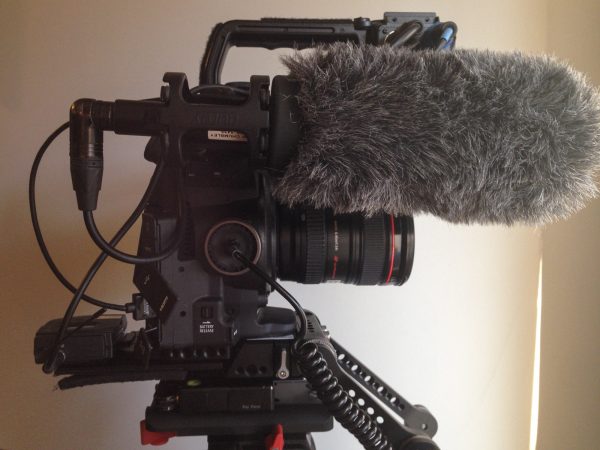
Need to shoot for broadcast?
Run clean HDMI out into an Atomos Ninja or Ninja Blade to deliver 4:2:2 color and bit rates equal or higher than 50 mbps. I have done this several times to deliver footage for shows on Al Jazeera America.
The C100 Mk II?
So, how much does all this matter now that the C100 has been updated to MK II guise? I haven’t gotten my hands on the new C100 Mk II, but from specifications I’ve seen it seems to be the camera Canon should of made the first time around. Here’s what I know:
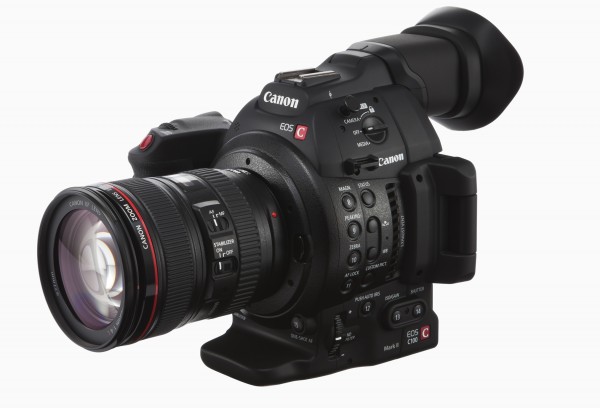
The useless EVF on the Mk I is now replaced by a completely functional one on the Mk II. It would make the Zacuto Z-Finder obsolete for my shooting style.
The new fully articulating OLED screen is a welcome improvement over the existing screen in both image replication and the fact that it makes it easier for one-man-band operators to monitor the camera.
New menu buttons on the screen allow the camera to be easily operated without its removable handgrip, and the new internal mic built into the body allows you to remove the top handle and strip the camera down into a very, very small package without purchasing extra microphones.
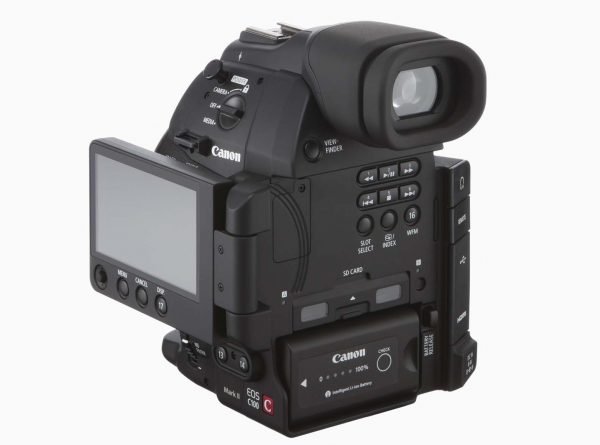
The MK II is an exciting camera, great for web news outlets and newspaper video journalists alike. I’d love to have one, but would I sell my C100 and shell out an additional $1500 – $2000 on top of its resale value for it? The answer is no. Why? Because it offers very few features that would allow me to diversify my shooting style.
True progressive slow motion shooting was one of the biggest features missing from the original C100 (and C300). The Mk II does offer 59.94 fps at 1080p, but this upgrade doesn’t provide much stylistic latitude in the slow motion scheme of things. The Mk II has Dual Pixel CMOS AF built in from the get go. As a Mk I owner, Canon offers a Dual Pixel autofocus as an upgrade, but it’s something I have voluntarily chosen to forgo.
So the new MKII camera just leaves me with a better EVF and LCD screen, but I’ve already spent a year figuring out how to work around the old ones – and the image quality remains more or less the same (ed – maybe slightly less noise but that’s it).
So what could Canon offer feature-wise to keep me on the C100 platform? Sadly nothing that wouldn’t cannibalize C300 sales. I might have jumped for it if it had broadcast standard 50 mbps internal recording capability, optional 4K over clean HDMI out – but perhaps at the very least, 120 fps at 1080p. What makes things worse is there are competitively priced cameras – like the Sony a7S – that have the ability to hit broadcast specifications at all the same frame rates (and more) offered by the C100 Mk II.
All in all, The C100 has been a workhorse for my web-based news and documentary work. The C100 Mk II addresses many of the flaws of its predecessor and eliminates the need to buy several additional accessories that were once non-negotiable due to the original design. The camera is now truly one of the best cameras for online news right out-of-the-box, but I think existing C100 owner won’t find enough incentives to upgrade. If you are a potential owner on the fence between the Mk I and the Mk II—go with latest model.
Spencer Chumbley is freelance producer and cinematographer based in Washington, DC. Follow him on Twitter at @SpencerChumbley.



